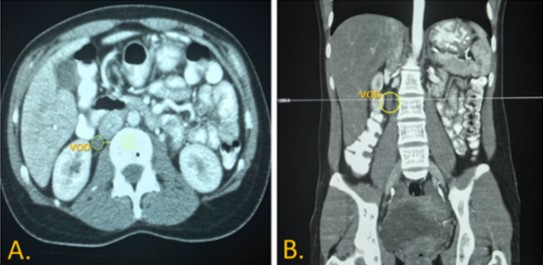Resumo
Resumen:
Para lograr una adecuada comprensión de los resultados de un estudio de investigación en salud es importante tener claros ciertos conceptos epidemiológicos y estadísticos. El objetivo de este artículo es abordar, de manera sencilla y clara, los conceptos de número necesario a tratar (NNT) y número necesario para producir daño (NNH), explicar cómo se calculan, aclarar la importancia de su interpretación y aplicación en contextos clínicos a partir de ejemplos, al igual que algunas de las limitaciones de su uso que han sido frecuentemente discutidas en la literatura.
Referencias:
Laupacis A, Sackett D, Roberts R. An assessment of clinically useful measures of the consequences of treatment. New England Journal of Medicine [Internet]. 1988 [cited 28 September 2020];318(26):1728-1733. Available from: https://pubmed.ncbi.nlm.nih.gov/3374545/
Mendes D, Alves C, Batel-Marques F. Number needed to treat (NNT) in clinical literature: an appraisal. BMC Medicine [Internet]. 2017 [cited 28 September 2020];15(1). Available from: https://pubmed.ncbi.nlm.nih.gov/28571585/
Lazcano-Ponce E, Salazar-Martínez E, Gutiérrez-Castrellón P, Angeles-Llerenas A, Hernández-Garduño A, Viramontes J. Ensayos clínicos aleatorizados: variantes, métodos de aleatorización, análisis, consideraciones éticas y regulación. Salud Pública de México [Internet]. 2004 [cited 18 September 2020];46(6):559-584. Available from: http://www.scielo.org.mx/scielo.php?script=sci_arttext&pid=S0036-36342004000600012
Altman D. The Revised CONSORT Statement for Reporting Randomized Trials: Explanation and Elaboration. Annals of Internal Medicine [Internet]. 2001 [cited 18 September 2020];134(8):663. Available from: https://pubmed.ncbi.nlm.nih.gov/11304107/
Gómez-Acebo I, Dierssen-Sotos T, Llorca J. Número necesario de tratamientos: interpretación y estimación en análisis multivariables y con datos censurados [Internet]. ELSEVIER. 2014 [cited 18 September 2020]. Available from: https://www.elsevier.es/es-revista-medicina-clinica-2-articulo-numero-necesario-tratamientos-interpretacion-estimacion-S0025775313003515
Andrade C. The Numbers Needed to Treat and Harm (NNT, NNH) Statistics: What They Tell Us and What They Do Not. The Journal of Clinical Psychiatry [Internet]. 2015 [cited 18 September 2020];76(03):e330-e333. Available from: https://pubmed.ncbi.nlm.nih.gov/25830454/
Citrome L, Du Y, Weiden P. Assessing effectiveness of aripiprazole lauroxil vs placebo for the treatment of schizophrenia using number needed to treat and number needed to harm. Neuropsychiatric Disease and Treatment [Internet]. 2019 [cited 18 September 2020];15:2639-2646. Available from: https://pubmed.ncbi.nlm.nih.gov/31686823/
Otero W, Sierra F. Medidas de impacto o magnitud del beneficio de una intervención. Revista Colombiana de Gastroenterología [Internet]. 2003 [cited 18 September 2020];18:46-48. Available from: http://www.scielo.org.co/pdf/rcg/v18n1/v18n1a08.pdf
Osiri M, Suarez-Almazor M, Wells G, Robinson V, Tugwell P. Number needed to treat (NNT): implication in rheumatology clinical practice. Annals of the Rheumatic Diseases [Internet]. 2003 [cited 14 October 2020];62(4):316-321. Available from: https://pubmed.ncbi.nlm.nih.gov/12634229/
DiCenso A. Clinically useful measures of the effects of treatment [Internet]. BMJ Journals. 2001 [cited 16 October 2020]. Available from: https://ebn.bmj.com/content/4/2/36
Xiong J, Lu H, Wang R, Jia Z. Efficacy of ibuprofen on prevention of high altitude headache: A systematic review and meta-analysis. PLOS ONE [Internet]. 2017 [cited 18 September 2020];12(6). Available from: https://pubmed.ncbi.nlm.nih.gov/28632763/#:~:text=Objective%3A%20Ibuprofen%20is%20used%20to,for%20the%20prevention%20of%20HAH.&text=Severe%20HAH%20occurred%20in%203,ibuprofen%20and%2010%25%20with%20placebo.
Demant D, Lund K, Vollert J, Maier C, Segerdahl M, Finnerup N et al. The effect of oxcarbazepine in peripheral neuropathic pain depends on pain phenotype: A randomised, double-blind, placebo-controlled phenotype-stratified study [Internet]. Pub Med. 2020 [cited 6 October 2020]. Available from: https://pubmed.ncbi.nlm.nih.gov/25139589/
Wang Y, Wang M, Ni Y, Liang Z. Direct oral anticoagulants for thromboprophylaxis in ambulatory patients with cancer. Hematology [Internet]. 2020 [cited 6 October 2020];25(1):63-70. Available from: https://pubmed.ncbi.nlm.nih.gov/31984870/
Citrome L. Cariprazine for the Treatment of Schizophrenia: A Review of this Dopamine D3-Preferring D3/D2 Receptor Partial Agonist. Clinical Schizophrenia & Related Psychoses [Internet]. 2016 [cited 18 September 2020];10(2):109-119. Available from: https://pubmed.ncbi.nlm.nih.gov/27440212/
Citrome L, Ketter T. NNT and NNH remain helpful in evidence-based medicine. British Journal of Psychiatry [Internet]. 2016 [cited 18 September 2020];209(3):262-263. Available from: https://pubmed.ncbi.nlm.nih.gov/27587765/
Roose S, Rutherford B, Wall M, Thase M. Practising evidence-based medicine in an era of high placebo response: number needed to treat reconsidered. British Journal of Psychiatry [Internet]. 2016 [cited 13 October 2020];208(5):416-420. Available from: https://pubmed.ncbi.nlm.nih.gov/27143006/
Bender R. Calculating Confidence Intervals for the Number Needed to Treat. Controlled Clinical Trials [Internet]. 2001 [cited 15 October 2020];22(2):102-110. Available from: https://pubmed.ncbi.nlm.nih.gov/11306148/
Sauro J, Lewis J. Estimating Completion Rates from Small Samples Using Binomial Confidence Intervals: Comparisons and Recommendations. Proceedings of the Human Factors and Ergonomics Society Annual Meeting [Internet]. 2005 [cited 22 October 2020];49(24):2100-2103. Available from: https://www.researchgate.net/publication/228626370_Estimating_Completion_Rates_from_Small_Samples_Using_Binomial_Confidence_Intervals_Comparisons_and_Recommendations
Confidence Interval Calculator for a Completion Rate [Internet]. Measuringu.com. [cited 16 October 2020]. Available from: https://measuringu.com/wald/

Este trabalho está licenciado sob uma licença Creative Commons Attribution 4.0 International License.
Copyright (c) 2021 Maria Paula Jassir Acosta, Carlos Gómez-Restrepo


